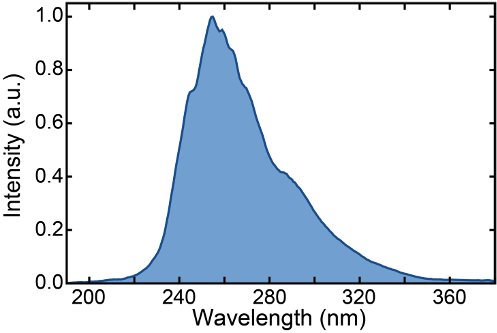Few-femtosecond UV light sources

Our group has developed a strong expertise in the development and applications of a new generation of light sources delivering few-cycle UV pulses, providing unprecedented temporal resolution for time-resolved UV spectroscopy. Because of the limitations imposed by the dispersive properties of bulk material for the generation of ultrashort UV pulses, our approaches focus on low dispersion gas-based generation techniques.
Glass cells: Glass cells are advantageous because they can accomodate high gas pressure and are resistant to high intensity laser pulses, preventing optical damage. We design a variety of glass cells in which we focalise intense 800 nm few-cycle pulses for third-harmonic generation in noble gases, and efficiently eliminate the residual gas for high-vacuum compatibility. This methods allows us to generate sub-2 fs UV light pulses with a typical spectrum spanning from 210-340 nm, that is over about 2 eV.
This technology is part of our XUV attosecond beamline and was supported by the European Research Council under the ERC-2014-StG STARLIGHT (grant no. 637756).
Capillary fibers: Capillaries offer a great alternative to glass cells and provide additional flexibility in terms of spectral tunability and polarization state of the UV pulses. Propagation of intense infrared laser pulses into such capillaries allows for dispersive wave emission in the UV spectral domain, supporting pulses as short as 3 fs. This technology is embedded in our high-repetition rate UV beamline as well as in our soft-X rays attosecond beamline, funded by the Deutsche Forschungsgemeinschaft (DFG, German Research Foundation) – SFB-925 – project 170620586 and the Partnership for Innovation, Education and Research (PIER) under the PIER seed project PIF-2021-03.
More information can be found here.